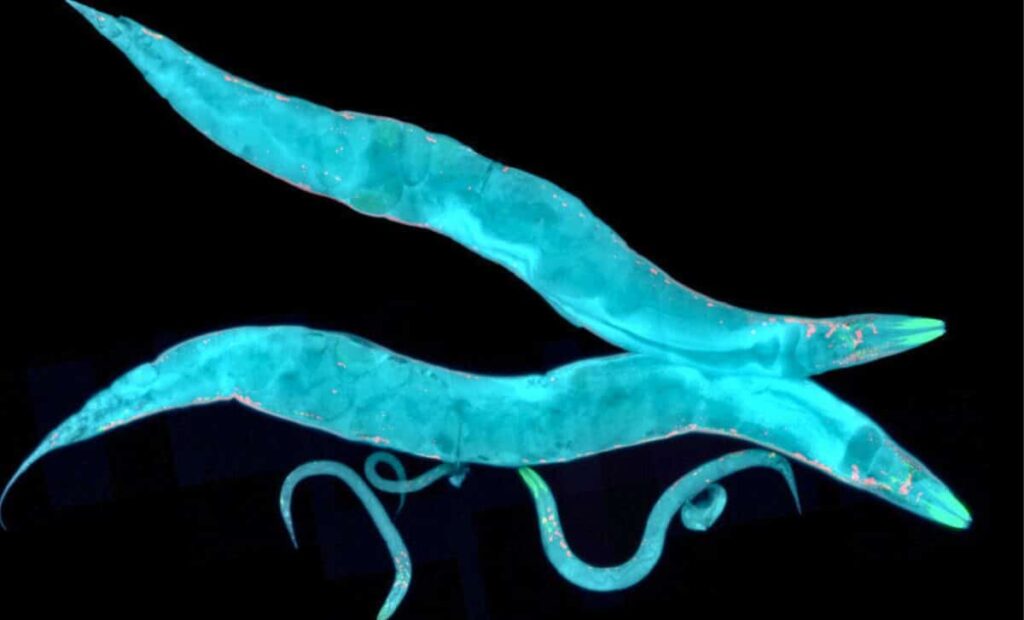
A groundbreaking study has revealed that a protein unique to tardigrades, microscopic invertebrates known for their resilience to extreme conditions, can extend the lifespan of a completely different organism. The protein, named Dsup (short for “damage suppressor”), is renowned for its ability to protect DNA from oxidative and radiation damage. This discovery is now drawing attention as a potential tool for studying stress resilience and aging.
Published in the journal Science Advances, the study demonstrated that expressing Dsup in Caenorhabditis elegans, a widely used model organism, significantly increased the worms’ resistance to oxidative stress and extended their median lifespan. Remarkably, these benefits were achieved without compromising the worms’ fertility, development, or movement.
Unveiling the Power of Dsup
Originally discovered in the genome of Ramazzottius varieornatus, a radiation-tolerant tardigrade, Dsup binds to DNA, shielding it from harmful agents like hydroxyl radicals. The new findings confirm, for the first time in a living animal, that a single tardigrade gene can enhance both stress tolerance and longevity.
Dsup first gained scientific attention when researchers demonstrated that inserting the gene into human cells reduced DNA damage from X-rays by approximately 40%, as reported in a 2016 study in Nature Communications. Subsequent structural studies confirmed that Dsup binds to nucleosomes, mitigating radiation-induced fragmentation by interacting with the DNA backbone.
Protection Without Trade-Offs
The recent study expanded on these findings by expressing a single-copy Dsup transgene in the genome of C. elegans. The protein was primarily expressed in the germline and localized to somatic nuclei, including muscle and intestinal cells. Unlike many genetic interventions that extend lifespan but impair reproduction or mobility, Dsup-expressing worms retained full reproductive capacity and normal movement.
When exposed to 90 Gy of X-ray radiation, a dose lethal to most organisms, the transgenic worms showed significantly higher survival rates. This protection persisted into the next generation. Further tests with oxidants such as hydrogen peroxide and paraquat also demonstrated improved resistance, confirming that Dsup offers broad protection against various forms of cellular stress.
Mechanisms of Stress Reduction
Interestingly, Dsup does not activate the worm’s stress-response machinery. Using a fluorescent reporter strain, researchers tracked the activity of DAF-16/FOXO, a key transcription factor that typically migrates into the nucleus during oxidative stress. In Dsup-expressing worms, DAF-16 activation was delayed, suggesting that the cells experienced less stress.
To verify this, the team introduced a genetically encoded HyPer biosensor, which fluoresces in response to hydrogen peroxide. During arsenite exposure, Dsup-expressing worms showed lower intracellular ROS levels than controls, providing real-time evidence that the protein reduces oxidative load at the source.
Further analysis using Seahorse metabolic profiling revealed that the worms also had reduced mitochondrial respiration, a trait previously linked to increased lifespan in many species.
Importantly, this decrease in oxygen consumption did not affect energy availability or mitochondrial structure, indicating a controlled slowdown rather than dysfunction.
Longevity Effect Confirmed
Life span assays confirmed that Dsup extended the median lifespan of C. elegans. To ensure the effect was due to the protein, researchers used RNA interference to silence the Dsup transgene in the worms. When the gene was knocked down, the lifespan advantage disappeared, confirming causality.
Unlike other long-lived mutants such as daf-2 or clk-1, the Dsup worms did not exhibit developmental delays, smaller brood sizes, or lower metabolic activity. Their behavior, movement, and fertility remained indistinguishable from wild-type animals.
The findings contrast with previous research in Arabidopsis plants, where Dsup enhanced DNA protection but had no effect on longevity, suggesting the lifespan benefits of Dsup may depend on host biology.
Implications for Future Research
While the full mechanism of Dsup is still being explored, the study confirms that the protein works through direct physical interaction with DNA and indirect modulation of oxidative metabolism. Its ability to prevent ROS buildup during stress, rather than merely responding to it, could offer new strategies for designing radioprotective therapies or cellular stress buffers.
Earlier attempts to overexpress Dsup in other animal models, such as Drosophila, resulted in developmental toxicity, likely due to high expression levels or promoter choice. The C. elegans model used a single-copy insertion and germline-specific promoter, which may explain the absence of side effects in this case.
The discovery of Dsup’s protective capabilities opens new avenues for research into engineered resilience, potentially paving the way for future applications in medicine and biotechnology.






